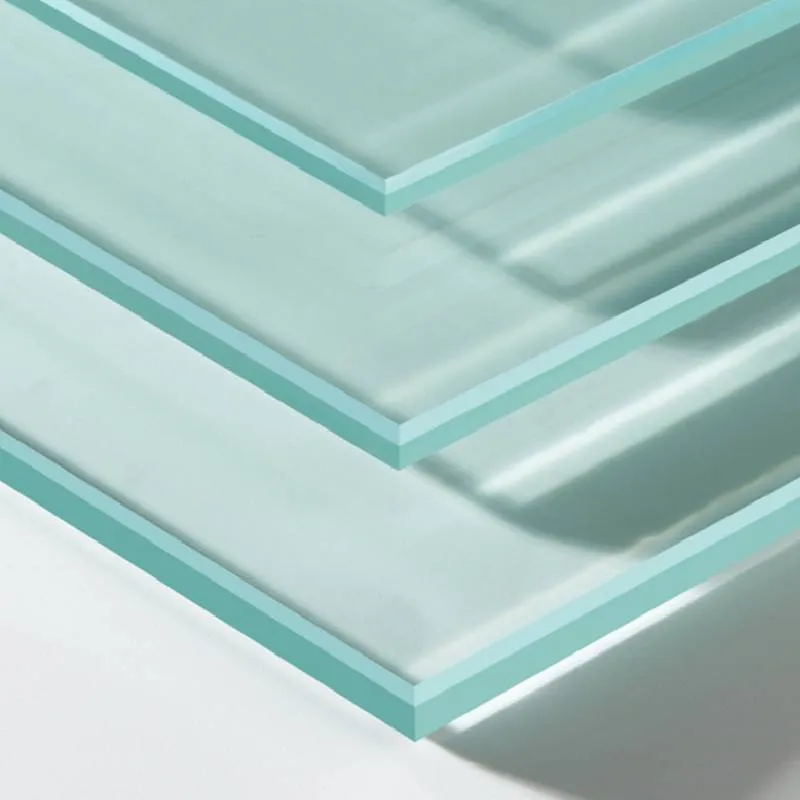Understanding Low Iron Glass What Does It Mean?
Low iron glass, sometimes referred to as ultra-clear or clear glass, is distinguished by its reduced iron content, which effectively minimizes the greenish tint typically associated with standard glass. This type of glass is becoming increasingly popular in various applications, particularly in architecture, display cases, and glass artworks due to its exceptional clarity and aesthetic appeal.
The Composition of Low Iron Glass
To appreciate what low iron glass is, it is essential to understand its composition. Standard glass is primarily made from silica, soda ash, and limestone, with small amounts of iron oxide present as a natural impurity. The iron content, though minimal, contributes to the greenish hue observed in ordinary glass. In the manufacturing of low iron glass, the raw materials are selected and processed to reduce the iron oxide content significantly, resulting in a material that is more transparent and allows for better light transmission.
Benefits of Low Iron Glass
1. Enhanced Clarity One of the primary benefits of low iron glass is its excellent visual clarity. This characteristic makes it ideal for applications where transparency is crucial, such as in modern architectural designs, where uninterrupted views are desired.
2. Color Accuracy Due to its lack of a green tint, low iron glass offers more accurate color representation. This is especially important in art galleries and showcases, where lighting and color play a vital role in the viewer's experience.
3. Increased Light Transmission Low iron glass can transmit more than 90% of visible light, making it an optimal choice for spaces that rely on natural light or require significant illumination, such as showrooms and exhibition spaces.
what does low iron glass mean
4. Versatility in Design Designers and architects favor low iron glass for its versatility. It can be used in various applications, including facades, skylights, and interior partitions, enhancing both functionality and aesthetics.
Applications of Low Iron Glass
The use of low iron glass spans several industries
- Architecture Its high clarity allows for stunning architectural designs that create open and airy environments, facilitating natural light while maintaining a modern aesthetic.
- Retail Displays Retailers often utilize low iron glass for display cases, as it enhances the presentation of products, making them more appealing to potential buyers.
- Art In art installations, low iron glass is used to frame artwork or create glass sculptures, ensuring that the focus remains on the art itself without distortion from tinting.
- Aquariums The clarity and transparency of low iron glass make it the glass of choice for high-end aquariums, providing unobstructed views of aquatic life.
Conclusion
In summary, low iron glass represents a significant advancement in glass technology, offering superior clarity, color accuracy, and light transmission compared to conventional glass. Its applications in architecture, display design, and artistry highlight its versatility and aesthetic appeal. As the demand for high-performance materials continues to grow, low iron glass stands out as a preferred choice for those seeking both beauty and functionality in their designs. Whether you're an architect, designer, or simply a homeowner looking to enhance your living space, understanding the benefits of low iron glass can help you make informed decisions that elevate your projects.
 Afrikaans
Afrikaans  Albanian
Albanian  Amharic
Amharic  Arabic
Arabic  Armenian
Armenian  Azerbaijani
Azerbaijani  Basque
Basque  Belarusian
Belarusian  Bengali
Bengali  Bosnian
Bosnian  Bulgarian
Bulgarian  Catalan
Catalan  Cebuano
Cebuano  Corsican
Corsican  Croatian
Croatian  Czech
Czech  Danish
Danish  Dutch
Dutch  English
English  Esperanto
Esperanto  Estonian
Estonian  Finnish
Finnish  French
French  Frisian
Frisian  Galician
Galician  Georgian
Georgian  German
German  Greek
Greek  Gujarati
Gujarati  Haitian Creole
Haitian Creole  hausa
hausa  hawaiian
hawaiian  Hebrew
Hebrew  Hindi
Hindi  Miao
Miao  Hungarian
Hungarian  Icelandic
Icelandic  igbo
igbo  Indonesian
Indonesian  irish
irish  Italian
Italian  Japanese
Japanese  Javanese
Javanese  Kannada
Kannada  kazakh
kazakh  Khmer
Khmer  Rwandese
Rwandese  Korean
Korean  Kurdish
Kurdish  Kyrgyz
Kyrgyz  Lao
Lao  Latin
Latin  Latvian
Latvian  Lithuanian
Lithuanian  Luxembourgish
Luxembourgish  Macedonian
Macedonian  Malgashi
Malgashi  Malay
Malay  Malayalam
Malayalam  Maltese
Maltese  Maori
Maori  Marathi
Marathi  Mongolian
Mongolian  Myanmar
Myanmar  Nepali
Nepali  Norwegian
Norwegian  Norwegian
Norwegian  Occitan
Occitan  Pashto
Pashto  Persian
Persian  Polish
Polish  Portuguese
Portuguese  Punjabi
Punjabi  Romanian
Romanian  Russian
Russian  Samoan
Samoan  Scottish Gaelic
Scottish Gaelic  Serbian
Serbian  Sesotho
Sesotho  Shona
Shona  Sindhi
Sindhi  Sinhala
Sinhala  Slovak
Slovak  Slovenian
Slovenian  Somali
Somali  Spanish
Spanish  Sundanese
Sundanese  Swahili
Swahili  Swedish
Swedish  Tagalog
Tagalog  Tajik
Tajik  Tamil
Tamil  Tatar
Tatar  Telugu
Telugu  Thai
Thai  Turkish
Turkish  Turkmen
Turkmen  Ukrainian
Ukrainian  Urdu
Urdu  Uighur
Uighur  Uzbek
Uzbek  Vietnamese
Vietnamese  Welsh
Welsh  Bantu
Bantu  Yiddish
Yiddish  Yoruba
Yoruba  Zulu
Zulu 

